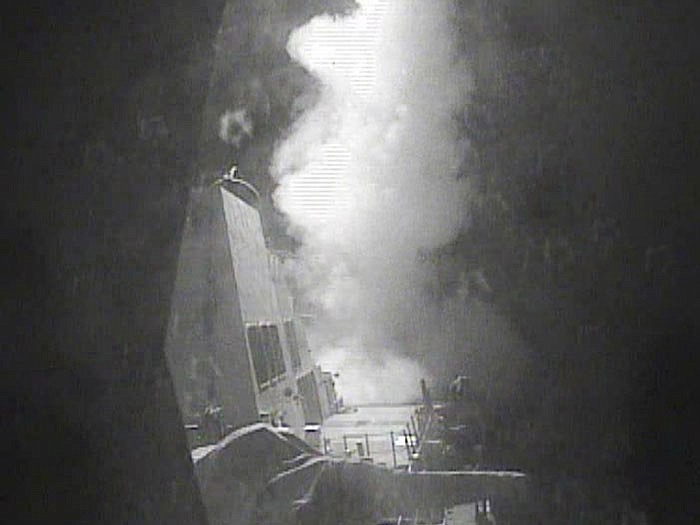WASHINGTON (AP) - U.S.-launched Tomahawk cruise missiles destroyed three coastal radar sites in Houthi-controlled territory on Yemen's Red Sea Coast early Thursday, officials said, a retaliatory action that followed two incidents this week in which missiles were fired at U.S. Navy ships.
The strikes marked the first U.S. strikes targeting the Houthis in Yemen's long-running civil war. The U.S. previously only provided logistical support and refueling to the Saudi-led coalition battling Yemen's Shiite rebels known as Houthis and their allies, including supporters of Yemen's former president, Ali Abdullah Saleh.
While the U.S. military has been focused on al-Qaida in Yemen, the Houthis had not been a primary target of American forces until the missile launches from Houthi-controlled territory this week.
No information on casualties from the U.S. missiles was provided by American officials. The three radar sites were in remote areas, where there was little risk of civilian casualties or collateral damage, said a military official who was not authorized to be named and spoke on condition of anonymity.
The destroyer USS Nitze launched the cruise missiles, the official said.
President Barack Obama authorized the strikes at the recommendation of Defense Secretary Ash Carter and the chairman of the Joint Chiefs of Staff, Gen. Joseph Dunford, Pentagon press secretary Peter Cook said in a statement. U.S. officials had said earlier the U.S. was weighing what military response to take.
"These limited self-defense strikes were conducted to protect our personnel, our ships and our freedom of navigation in this important maritime passageway," Cook said following the U.S. action.
"The United States will respond to any further threat to our ships and commercial traffic, as appropriate, and will continue to maintain our freedom of navigation in the Red Sea, the Bab al-Mandeb and elsewhere around the world."
In a sign of the regional nature of the Yemen conflict, the Houthis' ally Iran announced Thursday that it was deploying two warships into the Bab el-Mandeb strait and the Gulf of Aden.
The semi-official Tasnim news agency said the deployment of the Alvand and the Bushehr was part of a regular anti-piracy patrol off Yemen and East Africa. Still, its announcement hours after the American strike appeared aimed at sending a signal to the United States.
Iran says it supports the Houthis, though it denies arming the rebels. The U.S. Navy says it has intercepted shipments of weapons from Iran bound for Yemen.
Meanwhile, Yemen's state news agency Saba- under Houthis' control- quoted an unnamed military official as saying that US accusations that a US destroyer had come under attack from areas under control of Houthis were false. He said, "all these claims are totally untrue and that the popular committees (Houthi militias) have nothing to do with such action."
He added, "such claims are part of the general context of creating false justifications to escalate assaults and cover up the continuous crimes committed by the aggression against the Yemeni people, along with the blockade imposed on it, and after the increasing condemnations to such barbaric and hideous crimes against Yemenis."
Loai al-Shami, a Houthi spokesman, had earlier declined to comment on the U.S. strike.
Sharaf loqman, spokesman for the Yemeni army, called it an "American farce to find a reason to interfere in Yemen directly after failure of the Saudis."
He said that the army never targets ships outside the territorial waters and only those that enter the Yemeni waters come under attack.
Early Wednesday, two missiles were fired at the USS Mason, an Arleigh Burke class of guided missile destroyer that is conducting routine operations in the region with the USS Ponce, an amphibious warship. Neither missile got near the ship, said a U.S. military official.
The missiles were fired from the Yemen coast, near the location used Sunday when two missiles were launched at the same two ships, said the official, who was not authorized to be named and spoke on condition of anonymity.

